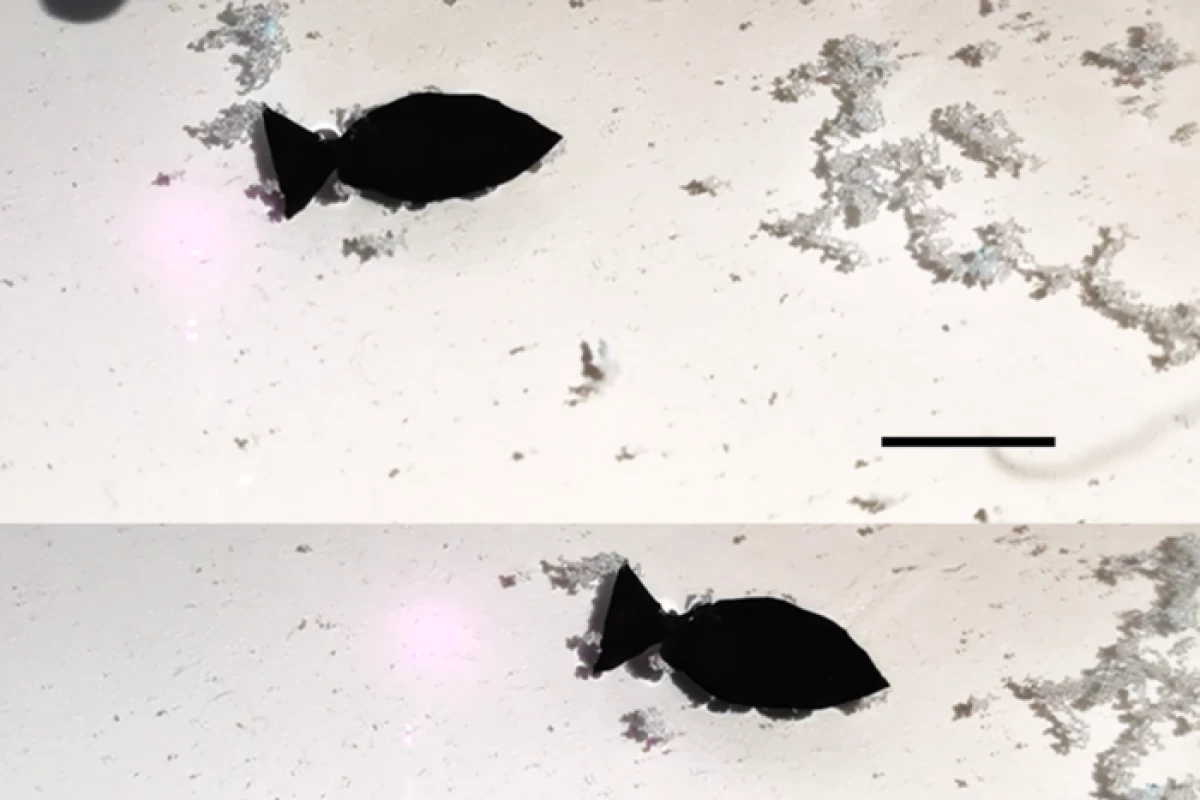There is a lot for us still to learn about the dangers microplastics pose to the environment and the health of living organisms, but one thing is clear, their presence is widespread and only becoming more-so. Scientists have come up with a novel cleanup solution that takes its cues from nature, in the form of a fish-like robot that can move through the water and soak up small plastic pieces as it goes.
The light-activated machine is the handiwork of scientists in China who were looking to improve on current approaches to soft robots that are designed to clean up contaminated water. These are often made with hydrogels and elastomers that don't stand up so well in these environments, so the scientists turned to mother-of-pearl, or nacre, the composite material some molluscs such as clams secrete as a layer for their inner shell.
This material features a microscopic gradient that transitions from calcium carbonate mineral-polymer composites on one side to another side bearing mostly silk protein filler. The team was able to mimic this gradient structure by creating composite nanosheets made of molecules with hydrophobic interiors and hydrophilic exteriors, along with sulfonated graphene.
These sheets were doped with varying concentrations of polyurethane latex mixtures, and then assembled layer-by-layer to create an ordered gradient mimicking that found in nacre. This was then fashioned into a fish-shaped tiny robot measuring just 15 mm (0.6 in), with a near infrared laser light in its tail and impressive durability and flexibility.
Turning this laser on and off causes the tail to flap, propelling the fish forward at 2.67 body lengths per second. The team says this is a faster speed than similar soft swimming robots and around the same speed as phytoplankton. Through their experiments, the team was able to show that the robot could repeatedly adsorb polystyrene microplastics and transport them to other locations. Impressively, it could also heal itself after being cut, without compromising on its adsorption abilities.
The scientists say this durability, matched with the robot's speed and ability to soak up plastic particles, could make it a valuable tool for addressing microplastic pollution in harsh aquatic environments, and may offer a blueprint for other multifunctional robots for similar applications.
The research was published in the journal Nano Letters.
Source: American Chemical Society




